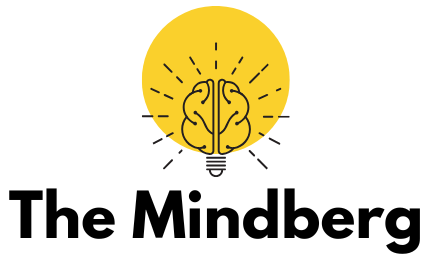HIV-Associated Neurocognitive Disorder (HAND) represents a significant complication in individuals living with HIV, affecting cognitive, behavioral, and motor functions. The condition arises due to the impact of HIV on the central nervous system (CNS), even in individuals receiving antiretroviral therapy (ART). While advancements in treatment have extended the life expectancy of those with HIV, the prevalence of HAND remains a pressing concern.
This disorder not only diminishes quality of life but also complicates the management of HIV by impairing an individual’s ability to adhere to treatment regimens. Understanding the symptoms and treatment strategies for HAND is crucial for early intervention and improving outcomes for affected individuals.
HAND encompasses a spectrum of neurocognitive impairments, ranging from asymptomatic neurocognitive impairment (ANI) to more severe conditions like HIV-associated dementia (HAD). Each stage presents unique challenges, requiring comprehensive assessment and targeted interventions.
By exploring the symptoms and available treatment options, healthcare providers and patients alike can better navigate the complexities of this disorder.
Moreover, increased awareness can foster early diagnosis, which is critical in mitigating the long-term effects of HAND. Through an in-depth understanding of HAND, this article aims to provide valuable insights into its clinical presentation and management strategies, emphasizing the importance of a multidisciplinary approach to care.
Understanding the Spectrum of HAND
HAND comprises three classifications: asymptomatic neurocognitive impairment (ANI), mild neurocognitive disorder (MND), and HIV-associated dementia (HAD). ANI, the mildest form, is characterized by subtle neurocognitive changes that do not interfere with daily activities.
MND, on the other hand, results in noticeable cognitive decline, impacting tasks such as problem-solving, memory recall, and attention span. HAD is the most severe manifestation, marked by profound cognitive impairment, motor dysfunction, and behavioral changes that significantly disrupt daily life.
These classifications illustrate the diverse impact HAND can have on individuals, underscoring the importance of early detection. Although the severity varies, all forms of HAND share a common thread—progressive damage to the CNS caused by HIV.
Recognizing the early symptoms, such as forgetfulness, difficulty concentrating, or changes in mood, can prompt timely medical intervention. Without proper management, HAND can progress to more debilitating stages, severely affecting the individual’s quality of life and ability to manage HIV effectively.
The Neurological Impact of HIV on the CNS
HIV infiltrates the CNS early in the course of infection, where it triggers chronic inflammation and neuronal damage. The virus gains access to the brain through infected immune cells, which then release pro-inflammatory molecules that damage brain tissue. Over time, this results in neurodegeneration, disrupting communication between neurons and impairing cognitive function.
The impact of HIV on the CNS is exacerbated by comorbid conditions such as substance abuse, aging, and other infections, which can intensify the progression of HAND. ART, while effective in suppressing viral replication, does not fully eliminate HIV from the CNS, leaving residual inflammation that contributes to ongoing neurological damage. Understanding these underlying mechanisms is essential for developing targeted therapies to mitigate the effects of HAND.
Identifying Symptoms of HAND
The symptoms of HAND vary depending on the severity of the disorder but generally include cognitive, behavioral, and motor impairments. Cognitive symptoms often involve memory loss, difficulty concentrating, and reduced problem-solving abilities. Behavioral changes, such as apathy, depression, and irritability, are also common. Motor symptoms, including unsteady gait, tremors, and slowed movements, become more pronounced in advanced stages.
Healthcare providers play a critical role in identifying these symptoms, as individuals with HAND may not recognize or report them. Routine neurocognitive assessments should be integrated into the care of individuals living with HIV to ensure early detection and intervention. By identifying these symptoms early, healthcare teams can implement tailored treatment plans to slow the progression of HAND and improve overall quality of life.
The Role of Antiretroviral Therapy in Managing HAND
ART remains the cornerstone of treatment for HAND, as it reduces viral load and mitigates the neurocognitive effects of HIV. However, not all ART regimens penetrate the CNS effectively, which can limit their ability to fully address HAND-related symptoms. Research has highlighted the importance of selecting ART regimens with high CNS penetration effectiveness (CPE) scores to optimize outcomes for individuals with HAND.
Despite its benefits, ART alone is often insufficient to reverse neurocognitive damage. Adjunct therapies, including anti-inflammatory agents and neuroprotective drugs, are being explored to address the residual effects of HIV on the CNS. Combining ART with these emerging therapies offers a promising approach to managing HAND more effectively and improving patients’ quality of life.
Lifestyle Modifications and Supportive Therapies
In addition to medical treatments, lifestyle modifications and supportive therapies play a vital role in managing HAND. Cognitive rehabilitation programs, including memory training and problem-solving exercises, can help individuals regain lost skills and adapt to cognitive challenges. Physical therapy can address motor impairments, improving coordination and mobility.
Nutrition and mental health support are equally important in the comprehensive care of individuals with HAND. A balanced diet rich in antioxidants and essential nutrients can promote brain health, while counseling and therapy can address behavioral changes and emotional well-being. These holistic interventions, when combined with medical treatment, provide a robust framework for managing HAND and enhancing overall quality of life.
The Importance of Early Diagnosis
Early diagnosis of HAND is critical in preventing its progression and minimizing its impact on daily life. Routine screening for neurocognitive impairments should be a standard part of HIV care, particularly for individuals at higher risk due to age, substance use, or comorbidities. Tools such as neuropsychological tests and brain imaging can aid in detecting early signs of HAND, enabling timely intervention.
Raising awareness about HAND among healthcare providers and individuals living with HIV is essential for promoting early diagnosis. Educational campaigns and training programs can equip medical professionals with the knowledge to recognize HAND symptoms and implement appropriate care strategies. Similarly, empowering individuals with HIV to report cognitive or behavioral changes can facilitate earlier medical attention and better outcomes.
Emerging Research and Future Directions
Research into HAND continues to evolve, with scientists exploring new therapies and interventions to address its complex challenges. Studies on neuroprotective agents, anti-inflammatory drugs, and gene therapy offer hope for more effective treatment options in the future. Additionally, advances in imaging technologies and biomarkers are enhancing the ability to diagnose HAND earlier and more accurately.
Collaboration between researchers, clinicians, and community organizations is vital for translating these discoveries into practical solutions. By fostering innovation and prioritizing HAND in HIV research agendas, the medical community can make significant strides in mitigating the burden of this disorder.

